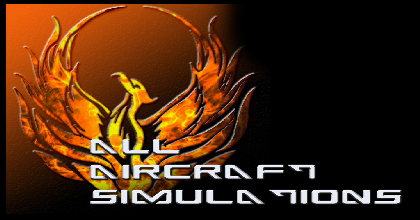Okay, I'm stupid.
I put my map_c (saved as an uncompressed .tga greyscale at 1 pixel - 50 m) in a folder with cmap.jar and disect.bat and I right clicked on disect.bat and.......... nothing happened. Well, the disect.bat icon flashed for a millisecond. But the map_c was not dissected and no c_map. table was created.
So what am I doing wrong?
read readme again ....
you need to rename your file as instructed in order to get it dissected ( not as map_C.tga )
Z
Well, just tried that. I renamed to Mymap_c.tga and clicked on transform.bat. But again nothing happened.
The map_c.tga file is divisible 32 x 32 and greyscale and uncompressed. It should be operable.
Is there something wrong with how I am trying to run the .bat program? This is my first time trying to do something like this?
from readme :
2) DISECTING TGA FILE
Place MWmap_c.tga into a folder where
CMap.jar is.
Run:
disect.bat
This will create newMWmap_c.tga and MWmap_c.tga_table files
which are in format which IL2 can understand. MWmap_c.tga can
be any image you modified or created from scratch. MWmap_c.tga
must have dimensions which are multiple of 32x32 (for example
1536x1312) and have color depth of 1 byte (i.e. grayscale image).
Have you got Java installed?
Hi Mandrill,
This one might be easier to use. No Java, .NET or other surplus junk needed. "Old fashioned" complied Windows application (has a manual and it's faster too).
viewtopic.php?t=9486
Make sure there is only one layer in the image.
Are you using GIMP? GIMP appears to have a bug which may tell you that the image only has one layer when, in fact, there are still multiple layers. Go into GIMP and "flatten" the image to ensure that there is only one layer. Then save and try again.
Thanks, Redwulf. I d/l-ed the alternative application and tried it out. I got a little farther along. It opened my map_c.tga and then I attempted to create a map_c.table.
But after a few seconds, the application stopped and appeared confused. It then aborted the process and told me the map was "too complex".
I checked in PSP that the map is only 1 layer. It is. And it is in greyscale and just uses black and white.
The map is quite large - over 10,000 pixels wide. And it has a lot of little lakes and a few large rivers. No sea coast at all. (Central Russia).
Any guesses or suggestions as to what I should do???? I could white out some of the lakes, but I don't want to do that unless I genuinely have to.
---------------------
I later went and made a little map_c test map with just some black flood fills on a 640 x 640 white square. The map c toolbox program promptly made a nice dissected map_c and map_c.table out of this little guy. So I guess my Smolensk map really must be "too complex".
Something that has affected my tga's from time to time is forgetting to delete the invisible layers. In Gimp, merge visible layers but make sure 'Delete Invisible Layers' is checked. Also, don't forget to remove the Alpha Channel from your final layer.
:cheers:
I'm easily confused re the Alpha channel, as I'm not even sure the old edition of PSP I use even has one. How do I check for it and remove it, if it exists?
Thanks as always.
I checked the map_c and realized I had made a silly mistake. I have a working map which consists of a layer of map_c over a layer of map_h, both the same size. I can play with the transparency of the layers to see both the rivers/ lakes and the height of the terrain.
When I made the map_c from the working map by blending the layers, I forgot to make the top layer 100% opaque and as a result, I got an off-white/ faint gray map, instead of a white one!!! :oops:
I made a new map_c and checked it over after enlarging it. There were still some gray spots. I have no idea where they came from, but I messed with the histogram control, as Redwulf suggested and blitzed them out.
I discovered that I have to "tidy" the map_c a lot because the neat lines I thought I had drawn in suddenly don't look so neat at 400% size increase. So I will try the map_c toolbox program again in a few days.
Posts: 703
Threads: 9
Joined: Nov 2007
Always draw your map_C at its full size. I will save you a lot of aggravation when you finally get it in game.
![[Image: sig2.gif]](http://i48.photobucket.com/albums/f239/Skunk24/sig2.gif)
TEAM PACIFIC



![[Image: sig2.gif]](http://i48.photobucket.com/albums/f239/Skunk24/sig2.gif)